Gà Hấp Hành (Steamed Chicken With Scallions)
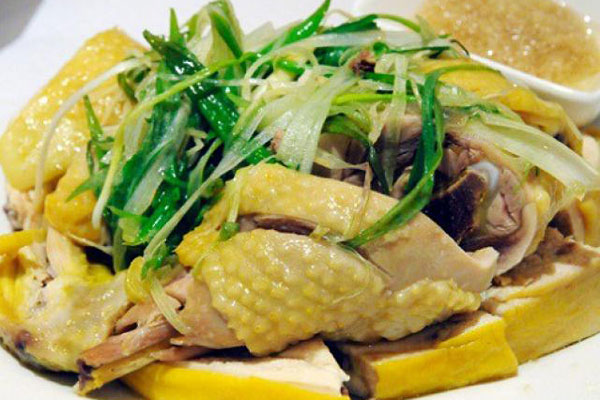
Ingredients
Main Protein
-
2 chicken thighs (má đùi gà, ~1kg total)
Aromatics & Herbs
-
100g scallions (hành lá, cut into long strips)
-
4 stalks lemongrass (smashed)
-
½ ginger root (sliced thin)
-
100g dried shiitake mushrooms (soaked and sliced)
Seasonings
-
A pinch of salt
-
1 tsp sugar
-
1 tsp seasoning powder (hạt nêm)
-
½ tsp ground pepper
How to choose fresh chicken thighs
- When buying chicken thighs, look for cuts with smooth, thin, pale yellow skin and meat that is firm and slightly pink — signs of freshness.
- Press your finger into the meat — if it springs back, it’s fresh; if it feels mushy or sticky, it’s likely old and should be avoided.
Stay away from chicken with a strong odor, dark yellow or dull coloring, or fat that appears dry and ivory — these are signs of poor storage or aged meat.
How to choose fresh scallions (spring onions)
- Select bunches that still have their white roots attached and bulbs that are plump and unblemished. The ideal scallions should have vibrant green leaves from root to tip and a sharp, peppery aroma.
- Avoid wilted, yellowing, or slimy stalks, and do not purchase scallions with an off smell or yellowed, shriveled bulbs — these are no longer fresh and will negatively affect your dish.
How to choose quality shiitake mushrooms
- For this dish, both fresh and dried shiitake mushrooms work well.
- Choose mushrooms with even brown coloring, a distinct earthy aroma, and firm stems. The caps should be slightly curled inward, with visible gills underneath and a fine layer of fuzz or bloom on the surface — a sign of high quality.
- Avoid mushrooms that are bruised, wrinkled, slimy, or have dark, almost black caps, as they may be spoiled or even toxic.
Nutritional Information
For: Omnivores
Calories per serving: ~250–300 kcal (per portion ~200g)
Key Nutrients
1. High-Quality Protein (25–30g)
- Source: Chicken thighs (má đùi gà)
- Benefits: Builds muscle, supports immune system, and provides lasting energy.
2. Antioxidants & Anti-inflammatory Compounds
-
Quercetin (from scallions): Supports heart health and immune defense
-
Gingerol (from ginger): Aids digestion and reduces inflammation
-
Polysaccharides (from dried shiitake mushrooms): May enhance immunity and gut health
-
Citral (from lemongrass): Natural detoxifier and antimicrobial
3. Essential Minerals
-
Iron & Zinc (from chicken): Support red blood cell production and healing
-
Potassium & Magnesium (from herbs): Support nerve and muscle function
-
Selenium (from chicken): Important for thyroid and antioxidant defense
1. Prepare the ingredients
- To remove any odor from the chicken, rub it thoroughly with 1 tablespoon of salt for 5–10 minutes, then rinse it 2–3 times with clean water and let it drain. Use a knife to score the surface of the chicken pieces.
- Marinate the chicken with 1 teaspoon of salt, 2 teaspoons of sugar, 1 teaspoon of seasoning powder, and ½ teaspoon of ground pepper. Mix well, then refrigerate for 15–30 minutes so the flavors absorb.
Alternative methods to remove chicken odor:
– Rub roasted crushed ginger onto the meat for 5–7 minutes, then rinse.
– Soak the chicken in a diluted mixture of salt and rice water for 10 minutes, rinse thoroughly.
– Rub with lime juice for about 10 minutes, then rinse clean.
- Peel off the outer layers of lemongrass, trim the base and top, then rinse and shred into thin strips.
Peel and slice ginger. - Soak dried shiitake mushrooms in warm water for 10–15 minutes, rinse off dirt, squeeze dry, and optionally cut into decorative flower shapes.
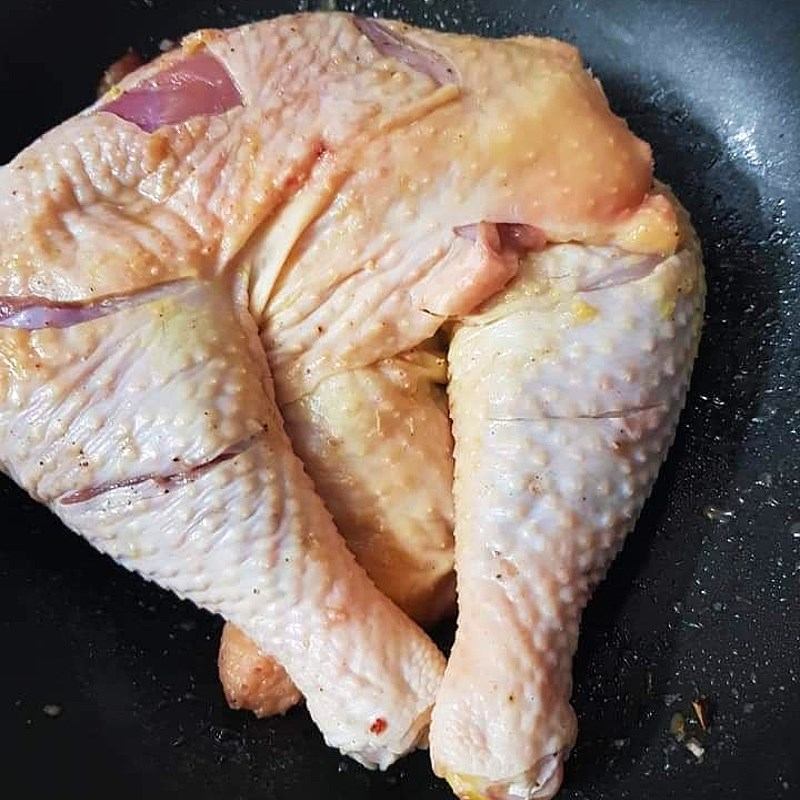
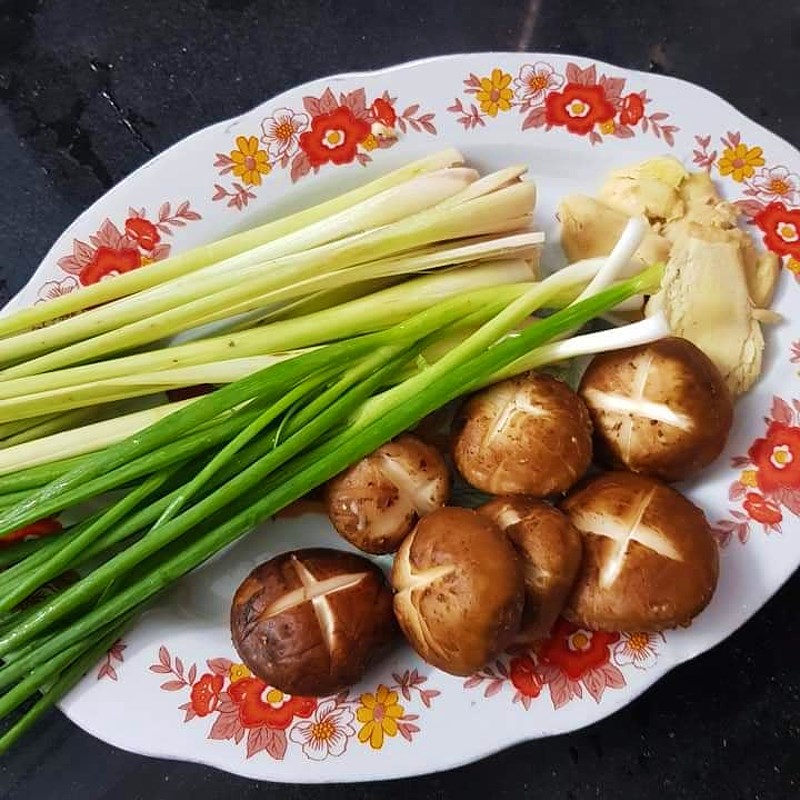
2. Steam the chicken
- Fill the bottom of a steamer with about 600ml of water and bring to a boil over high heat. Spread shredded lemongrass evenly on the steamer tray, then place the marinated chicken on top.
- Steam over medium heat for 15 minutes.
- After 15 minutes, when the chicken is nearly cooked, reduce the heat, add the ginger slices and shiitake mushrooms, and steam for another 10 minutes.
- Finally, scatter chopped scallions over the chicken and steam for an additional 5 minutes.
When done, remove from heat and cut the chicken into bite-sized pieces while still hot.
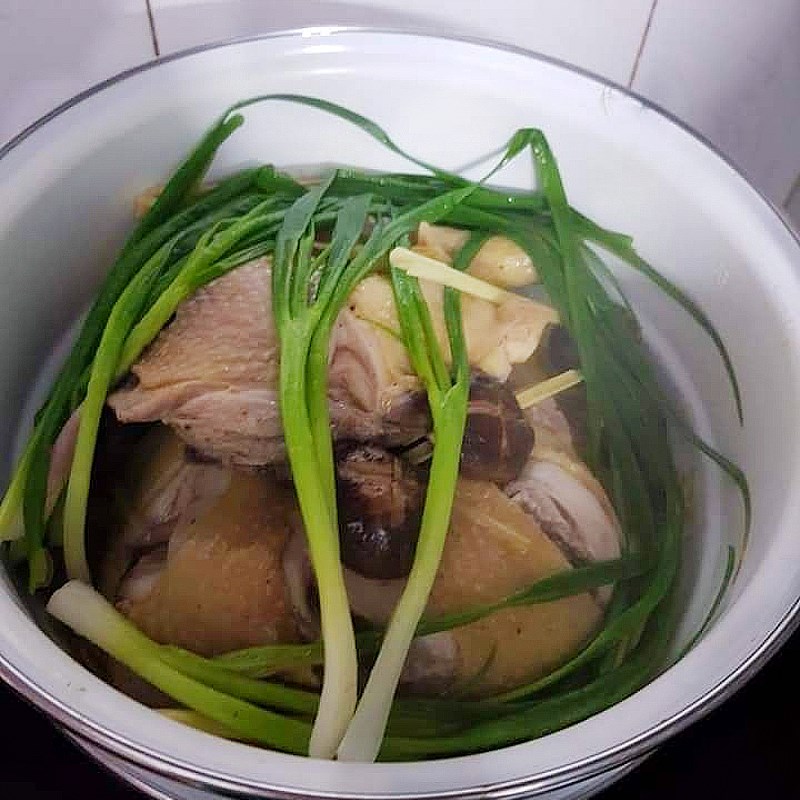
3. Final Product
- Steamed chicken with scallions is a simple yet soul-satisfying dish that brings together the delicate fragrance of lemongrass, ginger, and scallions.
- Thanks to the steaming method, the chicken remains juicy, tender, and naturally sweet.
- Best enjoyed hot, served with a dipping sauce of salt, pepper, and lime, and shared with a few good friends — it’s comfort food at its finest.
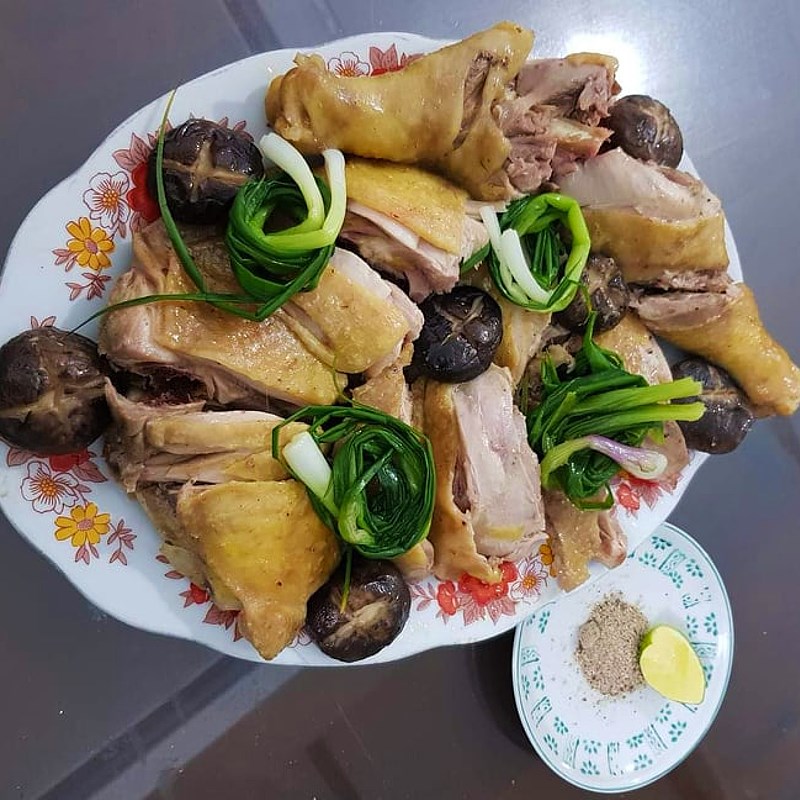
In the vibrant rhythm of Southern Vietnamese life, gà hấp hành—steamed chicken with scallions—is a dish that feels like home. It’s not flashy, but it carries the soul of comfort food and the spirit of shared moments. Traditionally, this dish is a common sight at family dinners and neighborhood gatherings, where the air is thick with laughter, clinking glasses, and the subtle aroma of lemongrass and ginger wafting from the kitchen.
What makes gà hấp hành so special isn’t just its tender texture or fragrant layers of flavor—it’s how it brings people together. Especially in Vietnam’s nhậu culture, where drinking is always accompanied by food and stories, this dish serves as the perfect companion. It’s light enough to enjoy between rounds of beer, yet flavorful enough to keep the appetite going. The herbal warmth from scallions and lemongrass, combined with the natural sweetness of chicken, balances the sharp tang of lime and chili dipping sauces served on the side.
In countryside homes or small corner beer stalls (quán nhậu), this dish often sits at the center of the table, shared among close friends or family. Every bite is a gentle reminder of how food in Vietnam isn’t just about taste—it’s about connection, memory, and celebration in the simplest form. Gà hấp hành may be humble, but it carries the essence of what makes Vietnamese cuisine deeply human: a sense of belonging.